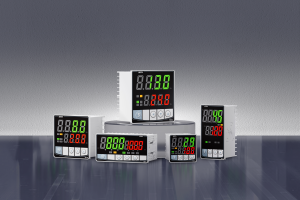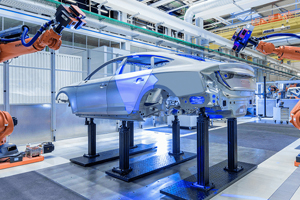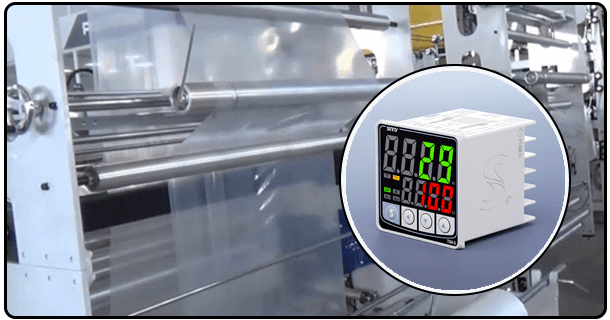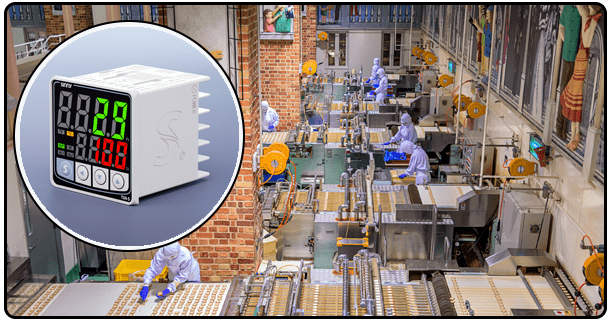Principles, components, and applications for process optimization
Learn the basics of Temperature PID control. Learn about its benefits and drawbacks, as well as the components of temperature PID control. Experts provide a detailed guide for thermal management.
I. I. Introduction
The regulation of temperature is an important parameter for a wide range of industrial and scientific applications. Maintaining the optimal temperature ensures that products are of high quality and safety is maximized. Among the most sophisticated and effective methods for achieving precise temperature control is PID (Proportional-Integral-Derivative) control. The technique is widely used in many sectors and allows heating, cooling or mixing elements be adjusted automatically to achieve a set temperature.
This comprehensive guide delves into the complexities of temperature control PID. The core principles of PID theory will be defined and we'll explain how to apply this algorithm specifically for thermal process management. We will also examine and explore the diverse applications of temperature PID systems in different industries. Finally, we'll discuss its tangible benefits. We will also discuss the common issues and challenges associated with tuning and implementing such systems. The purpose of this exploration is to demonstrate the authority and expertise required to effectively discuss this important technology. This discussion is structured to be clear. First, define PID itself. Second, link PID with temperature regulation. Third, detail the system components. Fourth, showcase its applications. Fifth, highlight its benefits. Sixth, acknowledge challenges. And finally, conclude this discussion by highlighting key takeaways.
II. What is PID Control (Programmable Integrated Device Control)?
PID Control, at its heart, is a mathematical method that regulates dynamic systems by changing their control inputs according to the differences between the desired setpoints and actual measurements. Named "PID", it is a mathematical algorithm that integrates three different terms: proportional, integral, and derivative. The three terms are used together to reduce the difference between the temperature setpoint and actual temperature over time.
A. Definition of PID (Proportional-Integral-Derivative)
A controller, also known as a PID, is a control system that uses feedback to correct the output from a process. It does this by measuring the variable of the process, comparing the value with the setpoint desired, and then adjusting the signal input accordingly. A PID controller's effectiveness depends on its ability both to respond appropriately to process changes and eliminate errors (the deviation from setpoint) in a systematic manner.
B. Explain the three components: proportional, integral, and derivative
It is important to understand the PID terms in order to fully appreciate their power.
Proportional Control (P): The action of this component is directly proportional to the size of the current error. In proportion to the value of error, controller outputs are adjusted. The proportional term can be used to generate substantial corrections if the temperature has been significantly altered from the target. If the temperature is off by a large amount, then the proportional term will generate a substantial corrective action. It is the primary advantage of using proportional terms that they respond immediately to any changes in errors. Purely proportional control can lead to a steady state error. The system might not achieve the setpoint exactly, but settles just a little bit away due system disruptions or delays. Offset is the term used to describe this.
Integral Control (I): This term refers to the past errors that have been accumulated. The controller adjusts its output in order to remove the accumulated error. Imagine it as "a memory" of previous errors. The integral term can be used to correct steady state errors that are not corrected by proportional control. If not tuned properly, the integral term can cause oscillations and instability.
Control (D) Derivative: The term is based upon the rate at which the error changes, and predicts future errors by analyzing the trend. The derivative control will make a substantial correction if the temperature deviates rapidly from the setpoint. In contrast, if error changes slowly, derivative actions are minimal. Its primary function is to reduce oscillations and provide a faster response time to change. It is however sensitive to the noise of measurement, and if it's not tuned carefully can introduce instability.
C. What is PID Control?
The PID loop is a constant cycle.
Measurement: The sensor measures the process variable currently being measured (e.g. temperature).
Comparing: A value measured is compared with the setpoint desired.
Calculate error: Error is calculated by determining the difference between setpoint and measured value (Error = Measured Value - Setpoint).
Calculate Output: PID calculates the output signal of the controller based on contributions from the proportional, integral, and derivative terms to the error.
Actuate The output signal calculated adjusts the last control element in the process (e.g. a heating/cooling or valve).
Repetition: The steps 1-5 of are repeatedly repeated, resulting in a feedback loop which constantly strives to reduce the error while maintaining the process variable within the set point.
III. Thermostat control and PID
To apply PID to temperature regulation, you must use the above principles to control thermal processes in a specified range.The PID system provides the framework to maintain accuracy and stability.
A. The importance of temperature control in industrial processes
In many industries, effective temperature control is essential. For chemical manufacturers, temperature control is essential to achieving desired product purity and reaction rates. Maintaining specific temperatures in the pharmaceutical sector is crucial for patient safety and product efficacy. Temperature control is essential in the food and beverage industries for safety, preservation and texture (pasteurization). In industries like electronics, materials processing and energy production, temperature control is crucial for protecting equipment and maintaining operational efficiency.
B. Temperature regulation using PID control
The temperature is used as the variable in a PID temperature control system. This temperature can be measured using a sensor of your choice (such as a thermocouple or RTD). Setpoint refers to the temperature that is required by the system. The PID controller calculates error and outputs a signal after processing the temperature.
C. The advantages of using PID control for temperature regulation
The use of PID temperature control offers many advantages over other control methods.
High Accuracy PID Controllers are capable of achieving very tight bands in the control band around setpoints, minimising temperature deviations.
Stability & Responsiveness A properly tuned PID system can handle disturbances effectively and quickly return the process back to the setpoint, without excessive oscillation.
Automation After being set up, the PID temperature control system automates the process of regulating the temperatures, eliminating the need for manual intervention.
Flexibility PID Controllers can be tuned to suit changing process conditions and requirements.
Increased product quality and yield: A consistent temperature control leads to more reliable and high-quality outputs.
IV. Parts of the Temperature PID System
The PID temperature control system is made up of many interconnected components that work together. It is important to understand these elements in order to fully appreciate how the system works.
A. A. Temperature Sensor
Sensors are the eyes of the control system. They measure the temperature in the controlled process. The type of sensor chosen depends on its application, temperature range and accuracy requirements. Common types include
Thermocouples Wide temperature range but lower accuracy.
The "brain" is the controller. The controller receives a temperature signal from a sensor and compares this to a user-defined setpoint. It then processes the information by using the PID algorithms, before calculating the output signal. Many modern controllers run sophisticated PID software and are digital. They can also provide features such as alarms, data-logging, communication (e.g. Ethernet, Modbus), visualization interfaces and additional functionality. It sends out commands according to the PID calculations.
C. C.
Actuator is "muscle", responsible for implementing control actions determined by controller. The actuator's main function is to alter the temperature of the process by adjusting the flow, heating or cooling. Common temperature controllers include:
Heating elements: Resistive coils and other heating elements.
Cooling Fans/Coils: Use chilled water to remove heat.
Valves Regulate the flow of cooling or heating fluids.
D. Process Element or Valve
The actuator will directly manipulate this component to change the temperature. This could be an actuator that controls the temperature of a fluid or heating jacket around a reaction vessel or fan cooling air. This element determines what type of actuator is required.
E. E.
This system is a closed loop feedback system. This is the sequence: Sensor measures, Controller calculates, Actuator reacts to process temperature change and then measures again. The system can dynamically adapt its response to maintain temperature within the setpoint and correct any disturbances.
V. Temperature PID Control Applications
PID controls are indispensable for many industrial and commercial applications that require temperature accuracy.
A. Chemical Industry
In chemical processing and synthesis, temperature control is essential. Temperature control is essential in chemical synthesis and processing. Reactions have temperature optimal ranges that are often narrow; deviations may lead to undesirable by-products or yield reductions. PID controllers ensure safe and consistent operation of reactors, mixing columns, drying ovens and distillation columns.
B. Pharmaceutical Industry
C. Food and Beverage Industry
Temperature control is crucial for the safety of food, its quality and texture. The PID system ensures consistent results, and helps prevent the growth of bacteria or spoilage.
D. HVAC Systems
To maintain healthy and comfortable indoor temperatures, HVAC systems (Heating, Ventilation and Air Conditioning) use PID principles. Thermostats, which regulate heating and cooling systems, are simple PID controllers.
E. Other Industries
PID is used widely in many other sectors, including:
Electronics Manufacturing: Soldering reflow processes, curing adhesives, and operating temperature-sensitive equipment.
Textiles Many dyeing and finishing processes require temperature precision.
Materials science: Annealing (hotia and bol’she for vremia) as well as other thermal treatments.
Energy Production: Nuclear reactors and solar thermal power plants.
Laboratory research: Incubators (Hong Xiang) and other scientific instruments.
VI. The benefits of temperature PID control
Implementing PID systems to manage temperature yields many benefits, including improved operational efficiency, better product quality and increased profitability.
A. A.
The PID controller allows very narrow temperature bands to be achieved. The high accuracy of PID control ensures the process variable remains consistently near the setpoint. This leads to consistent product quality, and reliable operation performance.
B. B.
The PID system minimizes the energy wasted by overheating and undercooling. It only consumes energy to correct deviations. This results in substantial energy savings when compared with less sophisticated methods of control.
C. C. Reduced risk of damage to equipment
Temperature extremes are a concern for many industrial processes, equipment and components. Precision PID control can prevent overheating and cooling which could lead to early wear, malfunction or catastrophic failures of machinery or components. It increases equipment life and lowers maintenance costs.
D. D.
Temperature control that is consistent with product standards can often be directly related to better quality. Maintaining optimal temperatures is often key in achieving desired specifications, whether it be the potency or flavor of food products, properties of chemical intermediates, electronic components, etc.
VII. The Challenges of Temperature PID Control
Although highly efficient, the implementation and operation of temperature PID systems poses certain challenges which require careful consideration.
A. A.
The most difficult part of the PID controller is finding the best tuning parameters. A poor tuning may result in slow response, oscillations that are excessive (instability) or a persistent steady state error. The Ziegler Nichols Method, a manual tuning technique, is one of many tuning techniques. Others include advanced tuning algorithms and automated methods. Each has its advantages and disadvantages. The tuning process is often complicated by the need to understand how processes work.
B. B.
Many thermal processes in real life exhibit non-linear behavior. Their response to changes of control input depends on the operating point. The relationship between voltage, temperature and a heating element may be linear for low-power but nonlinear when high-power due to saturation effects. The standard PID, which is designed to work with linear systems, may struggle when dealing with nonlinearities. This could require more aggressive tuning, or advanced control strategies such as gain scheduling, or nonlinear PID implementations.
C. C.
Processes are frequently subjected to disturbances from outside (e.g. changes in temperature or load fluctuation). They can cause unwanted fluctuations to occur in the signal of the controller, which could lead the system into oscillation. Noise can affect PID controllers. It may be necessary to apply filters to the sensor signals, or to adjust the tuning of the controller to increase robustness.
D. D. Integration and System Maintenance
Planning is essential when integrating a PID system into a process. It is important to ensure compatibility between controllers, sensors, actuators and communication protocols. As with any other control system, the PID controller and its associated components need regular maintenance. This includes sensor calibration and possible retuning when processes change or as equipment ages.
VIII. VIII.
The temperature PID control is a highly sophisticated, yet effective way to manage thermal processes in a wide range of industries. The ability of PID control to maintain product quality and ensure operational safety is critical for extending the life and increasing energy efficiency. Understanding the basic principles of PID Control - Proportional Integral Derivative - as well as the parts of a temperature control system can give us a better understanding of its operation.
This technology's versatility is demonstrated by its wide range of applications, from food processing to chemical manufacturing. Expertise and careful implementation can help overcome challenges like tuning, non-linearities and system integration. The importance and role of temperature PID controls will only grow as industrial processes demand ever higher precision and efficiency.
For those who want to gain more knowledge and practical guidance on how to implement it, engaging experienced control engineers or consulting with authoritative sources is invaluable. For engineers, technicians and managers who are involved in control system management and process optimization, understanding and mastering PID temperature control is a vital skill.
- Understanding Temperature PID Control: A Comprehensive Guide
- Understanding fuzzy self-adaptive PID controllers























